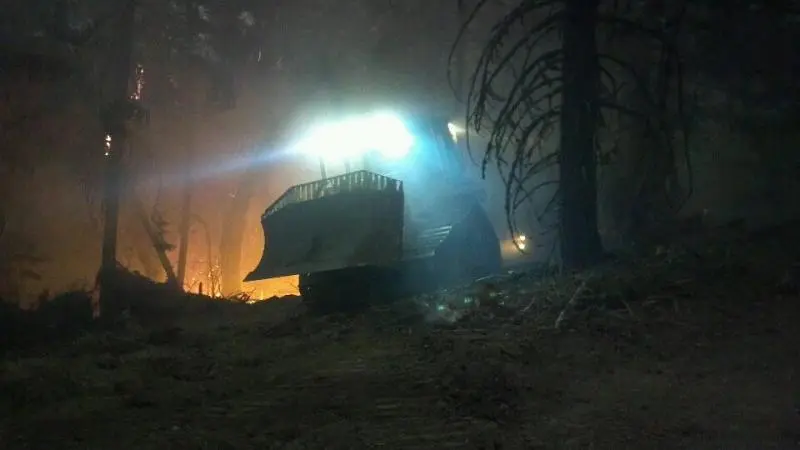
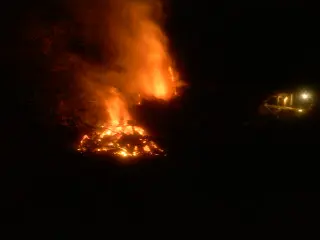
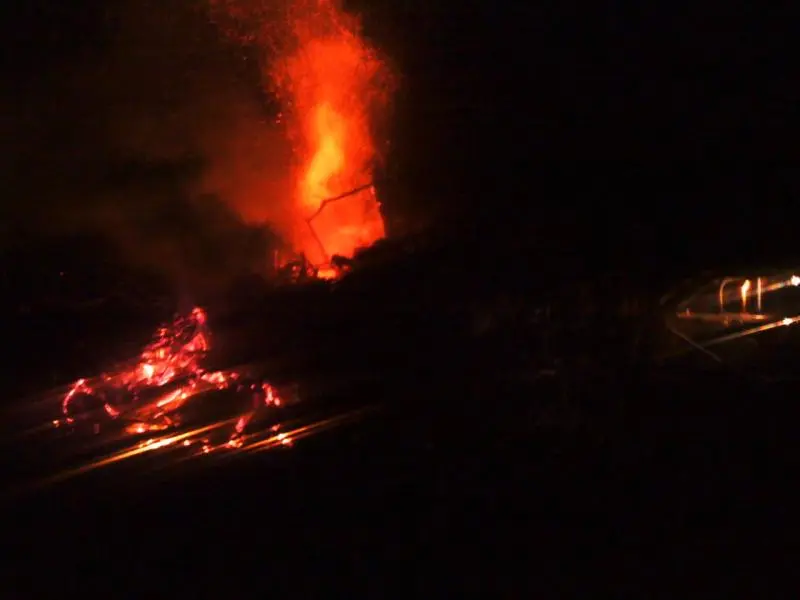
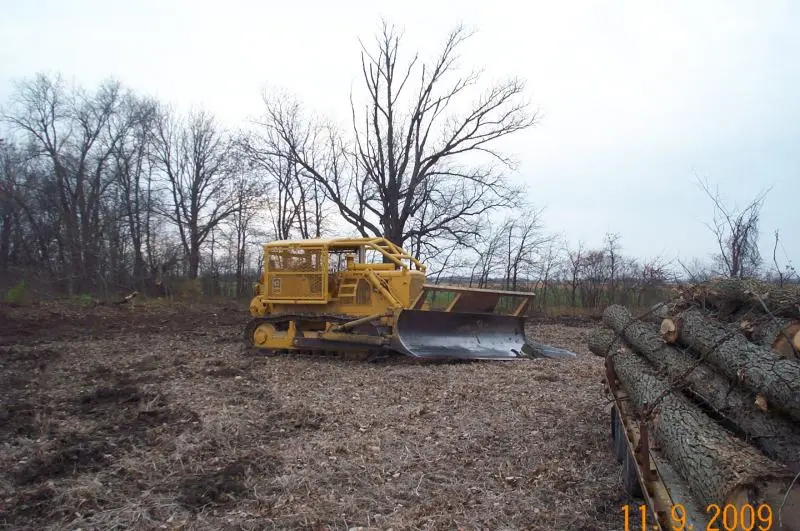
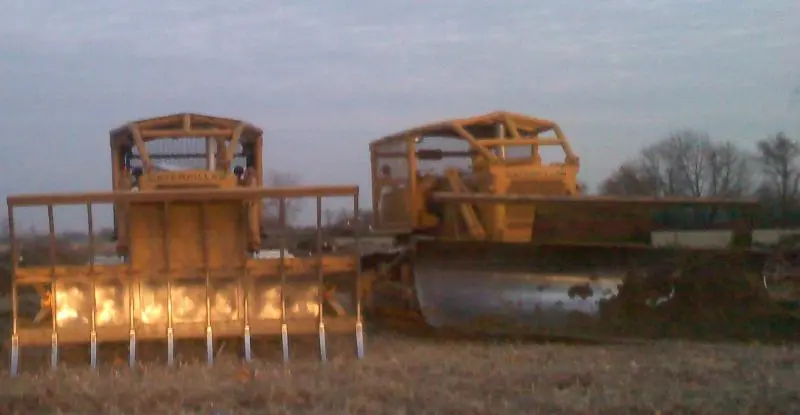
You weren't so far away I wish I could bring a couple Rome plows and rakes to help. There is some pretty rough terrain too that makes it hard for dozers to get ahead of the fires plus the winds out there.
Yes, the terrain is a problem here. The news just doesn't capture it well enough, so we're watching it all here:
http://www.inciweb.org/
-Sue
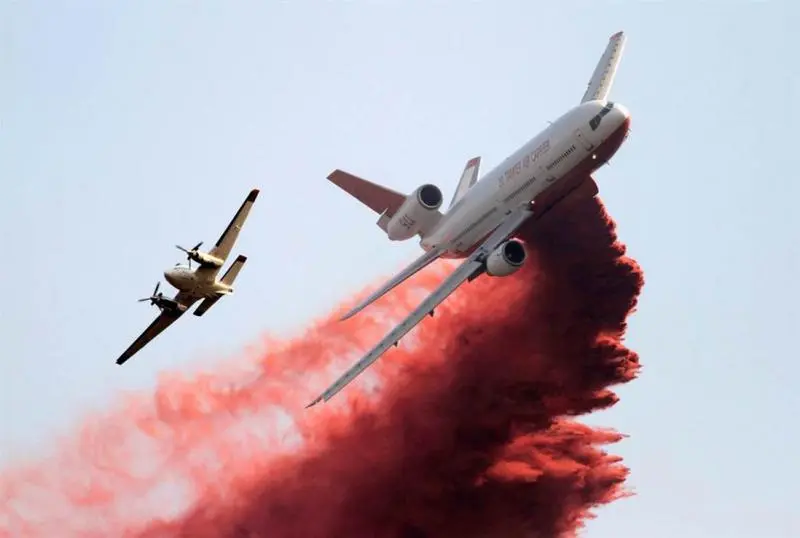
In my day-job at the Aviation Management Unit of the California Department of Forestry (now called "CalFire") while most of the current Northern California wildfires are being fought and managed by Federal resources, they are re-loading the contract DC-10's about 800 feet from my office. These are the same aircraft that Gov. Arnold had on an exclusive year-to-year stand-by contract. As soon as Gov. Jerry came in office, he terminated the CA contract.:doh: The company then had to lay-off a bunch of folks until the Feds picked them up on a will-call individual fire (Incident) basis. The DC-10 in the photo can drop just under 12,000 gallons of retardent per load. As I type this, the sister ship Tanker 911, has just started engines and is taxing out for another run!
This photo was taken during a retardent drop last week, right after they arrived at McClellan.
[attachment=14138]DC 10 with Lead Plane.jpg[/attachment]
I have seen snow cats, and farm cats on this site, but never fire cats. Thanks for sharing.
Jamie
Sue, that inciweb is a great resource. I used it quite a bit this summer watching the Colorado Springs fire. Good luck. I hope you and your family stay safe.
We're well away, thanks! The owners of a ranch in that area were very nice to let my daughter stay with them for a month and work the horses, so we're just anxious about their safety. They got all the horses out, and it looks like the fire made it to the top of the ridge above their property, but didn't make it down the hill.
John,
I'd be interested to know if you think this is true. About 10 years ago, CA had fires burning big time down in San Diego and lots of other places and I happened to be having breakfast with a McDonald Douglas engineer in a Long Beach restaurant. The fires were a hot topic. He told me how I think, your agency or somewhere in the state government, would not consider the use of DC 10s for firefighting. He told me McDonald Douglas had worked out a scheme with FedEx to come up with a set of equipment which could be retrofitted into one of their DC 10s in less than 12 hours and the plane put to work on the fires but the government bureaucrats would not even consider it. After 1/2 of San Diego County burned down in '03, I saw where they had them working on the '07 fires so maybe it was Arnold that got that straightened out. The use of military helos was another asset which was not used and it too got worked out by the time of the '07 fires.
Sorry this is not directly involving Cats but I had to ask.- Jan
Cat 15 PV 7207
Hi Jan,
Everything you said seems to me to quite plausible for the following reasons:
Of course government is always slow to change. The current DC-10's are privately owned and were modified from excess airframes from their parent company's charter passenger/cargo service (Omni Air). The same goes for Evergreen's 747 Supertanker as it was from their worldwide cargo operations.
Every commercial operator (fixed wing or helicopter) who contracts with the Fed's (USFS) or any of the States must have their equipment "certified and carded" before the fire season. This is for equipment safety and includes aircrew training. The airspace above a fire can get quite crowded, plus an accidental retardent drop on any of the firefighters on the ground could be deadly! Actually, this is pre-certification in order to be on the call-when-needed list, also applies to the bulldozer (FireCats) operators who do fireline clearing operations for the Fed's, state or local fire departments.
With Very Large Airtankers (VLAT) like the DC-10 or Evergreen's converted Cargo 747, a smaller lead plane flys ahead of the tanker to ensure no adverse downdrafts or white-out smoke conditions - VLAT's are just too large to be able to make fast evasive maneuvers at their relatively low application speed of 140+ knots, unlike smaller Airtankers that only hold 800 to 2000 gallons of retardent who are not flying at their lowest maneuverable speed during the pass leading to the retardent drop!
States like California don't really have access to VLAT's as the aircraft they get free from the Fed's are old military aircraft, plus their budget couldn't afford to convert and operate such large equipment. The private contractors are able to move their aircraft to other parts of the world during our winter. Australia is one example of this.
Here's some fun links if you're interested:[indent]http://www.fire.ca.gov/fire_protection/fire_protection_air_program.php[/indent]
[indent][url="http://en.wikipedia.org/wiki/DC-10_Air_tanker"]
http://en.wikipedia.org/wiki/DC-10_Air_tanker[/url]
http://en.wikipedia.org/wiki/Evergreen_747_Supertanker
[/indent]
Yes, my bad, as this off topic, however I did mention fire dozer operations! 👍
Hi Jan,
Everything you said seems to me to quite plausible for the following reasons:
Of course government is always slow to change. The current DC-10's are privately owned and were modified from excess airframes from their parent company's charter passenger/cargo service (Omni Air). The same goes for Evergreen's 747 Supertanker as it was from their worldwide cargo operations.
Every commercial operator (fixed wing or helicopter) who contracts with the Fed's (USFS) or any of the States must have their equipment "certified and carded" before the fire season. This is for equipment safety and includes aircrew training. The airspace above a fire can get quite crowded, plus an accidental retardent drop on any of the firefighters on the ground could be deadly! Actually, this is pre-certification in order to be on the call-when-needed list, also applies to the bulldozer (FireCats) operators who do fireline clearing operations for the Fed's, state or local fire departments.
With Very Large Airtankers (VLAT) like the DC-10 or Evergreen's converted Cargo 747, a smaller lead plane flys ahead of the tanker to ensure no adverse downdrafts or white-out smoke conditions - VLAT's are just too large to be able to make fast evasive maneuvers at their relatively low application speed of 140+ knots, unlike smaller Airtankers that only hold 800 to 2000 gallons of retardent who are not flying at their lowest maneuverable speed during the pass leading to the retardent drop!
States like California don't really have access to VLAT's as the aircraft they get free from the Fed's are old military aircraft, plus their budget couldn't afford to convert and operate such large equipment. The private contractors are able to move their aircraft to other parts of the world during our winter. Australia is one example of this.
Here's some fun links if you're interested:[indent]http://www.fire.ca.gov/fire_protection/fire_protection_air_program.php[/indent]
[indent][url="http://en.wikipedia.org/wiki/DC-10_Air_tanker"]
http://en.wikipedia.org/wiki/DC-10_Air_tanker[/url]
http://en.wikipedia.org/wiki/Evergreen_747_Supertanker
[/indent]
Yes, my bad, as this off topic, however I did mention fire dozer operations! 👍